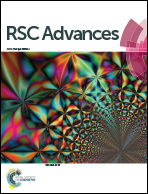Osteogenic differentiation of adipose-derived stem cells in mesoporous SBA-16 and SBA-16 hydroxyapatite scaffolds
Abstract
Adipose-derived stem cells (ASCs) are currently a point of focus for bone tissue engineering applications. In this study, a biomaterial (HA-SBA-16) has been developed based on the growth of calcium phosphate (HA) particles within an organized silica structure (SBA-16) to evaluate their application in the osteogenic differentiation process. Indeed, pure SBA-16 was used to compare the effect of structural characteristics on the biological application. The samples were characterized by N2 Adsorption, transmission electron microscopy (TEM), energy-dispersive X-ray spectroscopy (EDS) and thermal analysis. In vitro assays were performed to evaluate the viability, cytotoxicity and biological behavior of the ASCs on SBA-16 and HA/SBA-16 nanocomposites to verify their potential as bioactive materials for applications in bone-tissue engineering. The differentiation capacity of the ASCs seeded in SBA-16 and HA/SBA-16 was confirmed by the induction of the increase in AP production/activity of the ASCs, the expression of osteogenic gene markers (type I collagen mRNA, osteopontin and osteocalcin), and functionally, by Von Kossa staining. The results showed that those compositions have beneficial effects in stem cells, maintaining cell viability and allowing/promoting osteogenic differentiation.


 Please wait while we load your content...
Please wait while we load your content...